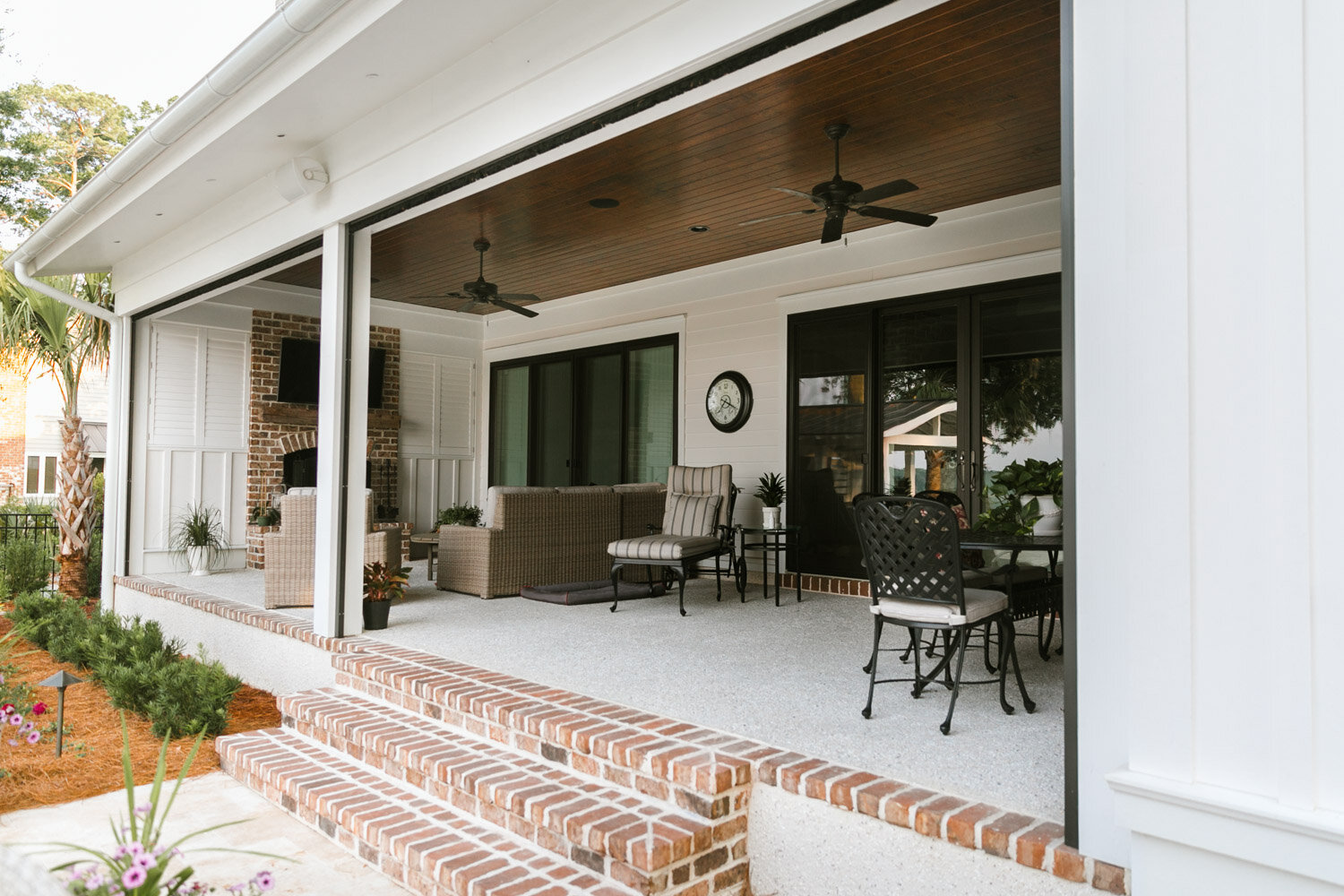The Importance of Conducting a Thorough Electrical Walkthrough
When you think about the process of building a custom home in the Lowcountry, you probably imagine the myriad details that give a property personality, from countertops to outdoor trim—and that’s true. However, what many people don’t realize is that the personalization options you have go even beyond that, extending all the way through to your electrical work! Enter: electrical walkthroughs.
An electrical walkthrough is the process of reviewing the placement of your custom home’s cans, switches, fans, and outlets. At Shoreline Construction, this step usually takes place after we have constructed the frame and roof of the home, and is meant to help you identify where you would like to install these elements.
The primary benefit of an electrical walkthrough is that you can determine exactly where and how you want electrical components installed, eliminating the need to come back and tear out drywall, trim, and re-wire later. However, there are a few more advantages worth noting, which we’ll cover below!
Benefits of Conducting a Thorough Electrical Walkthrough
During an electrical walkthrough, an electrician will take you through the home, marking locations where you would like to install components such as outlets and switches, light fixtures, and fans.
Even if you’re not 100% sure where to put these elements or concerned that having a lack of an electrical background will lead to incorrect placement, there’s no need to worry; at Shoreline Construction, electricians work with our in-house design team—Furnish by Shoreline—to place electrical components right where you need them. This makes everything more aesthetically pleasing and functional, with the design and technical aspects of your home working hand-in-hand from the start.
Of course, there are other benefits that stem from this process, including:
Avoiding the need to rewire elements later
Setting up your home’s electrical to support your current and future needs
Having outlets only where you need them, so that you can take advantage of every single outlet in your home
Avoiding inconvenient outlet placement, such as behind large pieces of furniture
Ensuring you’re meeting local and state residential building codes
Avoiding the potential for electrical or fire hazards later
Ensuring the ability to properly distribute power, which can help save energy and money in the long run
Things to Keep in Mind During an Electrical Walkthrough
Electrical work may be the last thing on your mind with all of the decisions you need to make to bring your dream home to life. With that said, here’s a helpful list of things you’ll want to remember as you go through the electrical walkthrough with your electrician or contractor:
Furnish by Shoreline can help you plan the placement of your furniture ahead of time. Our in-house design team can help you decide on furniture placement, including where you want to mount a TV or place large pieces like beds and couches, so that your electrician knows where sockets should be placed for maximum convenience.
Know your household’s power consumption. Consider bringing a copy of a normal electrical bill to show your electrician, so they know how much power you typically use each month. This will ensure that the type of electrical work that is completed matches the needs of your household.
Know how your household uses power. It’s also worth noting how you use your electricity; for example, do you work from home and require an ethernet connection in the office? Do you often use a sound system in the great room or living room and expect to have one installed in your custom home? Is there a particular room you spend most of your time in that will likely require the most power usage?
Consider whether you’ll need specialty sockets or switches. Homeowners sometimes forget that they have the option to customize sockets and switches! For example, some sockets feature USB charging ports, and you can use dimmers in place of switches for certain light fixtures.
Don’t forget about outdoor electrical work. If you’re interested in having an outdoor floodlight or motion detector, or installing a fan on your screened porch (which is very common in Lowcountry homes), it’s worth mentioning this to your electrician during the walkthrough as well. Also, consider light fixtures that may need to be placed along a walkway or around the pool area.







